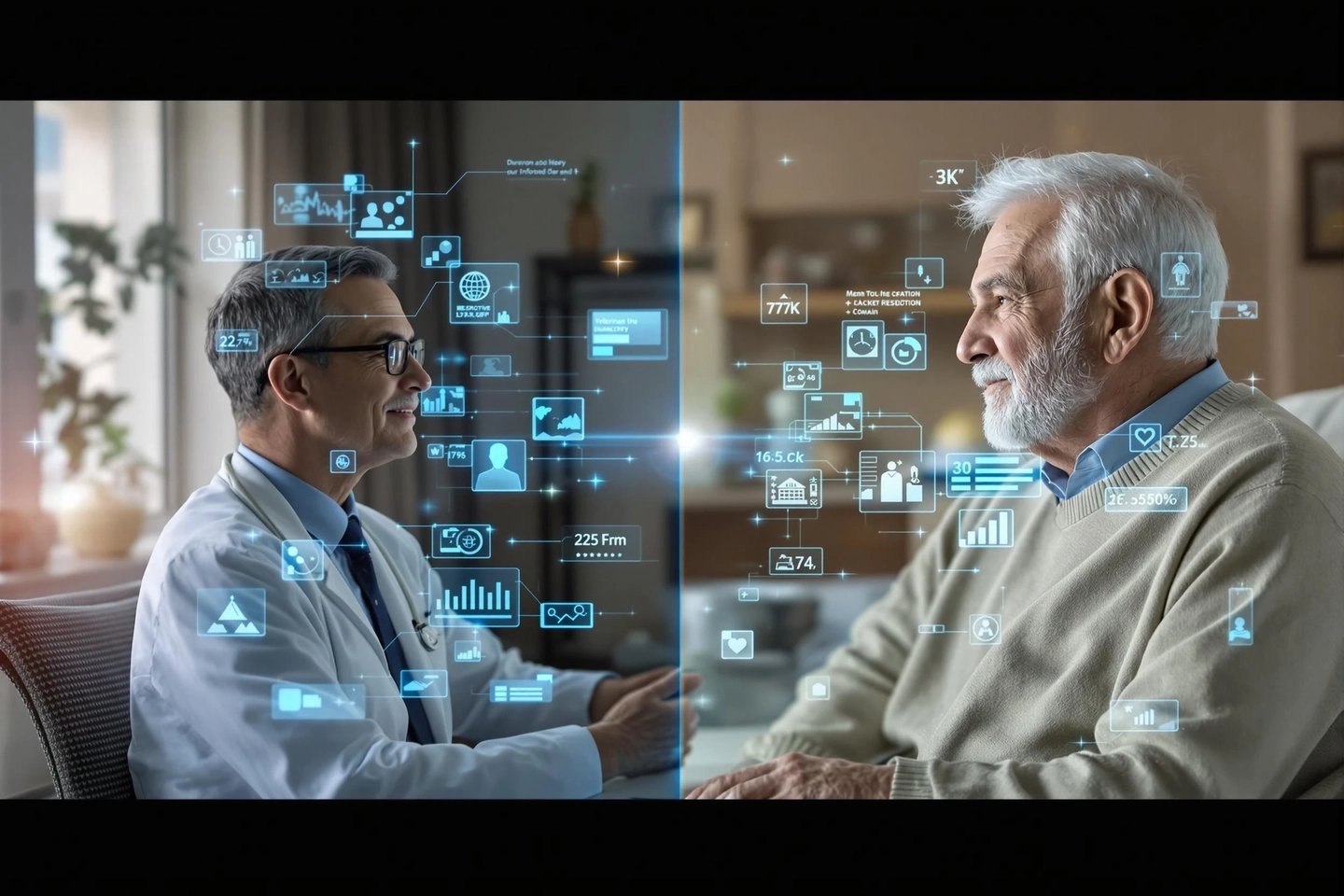
Telemedicine: A Revolution in Access and Efficiency
For centuries, healthcare was confined to physical spaces—whether the local doctor’s office or the nearest hospital. Care was dictated by proximity, and patients in rural or underserved areas often went without, while specialists remained accessible only to a fortunate few. The concept of telemedicine has existed since the 1920s, with its viability demonstrated as early as the 1950s. However, despite its potential, high costs and technological shortcomings slowed widespread adoption.
By the 1970s, organizations like NASA began exploring telemedicine’s possibilities, spurred by the need to provide care for astronauts and to transfer space-developed technologies to the private sector. Despite these advancements, telemedicine remained on the fringes until more recent breakthroughs in videoconferencing, digital imaging, and computer technologies made it more efficient and affordable.
Fast forward to the digital age, and telemedicine has finally found its moment, accelerated by the global pandemic and driven by the need for adaptable, scalable healthcare solutions. Today, we are witnessing a revolution in care delivery that is not just about improving convenience—it is about radically redefining healthcare access and efficiency in ways we are only beginning to comprehend.
Telemedicine has evolved from a niche solution to a cornerstone of modern healthcare—one that has the power to overcome geographical limitations, integrate AI-driven intelligence, and foster global collaboration at unprecedented levels. The future of healthcare is unfolding before us, and at the heart of this transformation is telemedicine, offering the potential to fundamentally reshape how we think about care.
Breaking the Global Healthcare Divide
Telemedicine is often lauded for its ability to connect rural or underserved communities with healthcare professionals, but that’s only scratching the surface of what’s possible. The true revolution lies in its potential to erase the global healthcare divide. No longer should healthcare be confined to local experts or national systems. Telemedicine can turn the world into a borderless healthcare network, where expertise from leading doctors and specialists can be shared globally in real time.
This model allows for a patient in Africa to consult with top specialists in oncology from Europe and the U.S. in a single day, or an outbreak in Southeast Asia to be remotely managed by an international team of infectious disease experts from different continents. This isn’t just access—it’s global healthcare equality, where care is dictated by need, not location.
Predictive, Proactive Care: AI-Driven Telemedicine
Where telemedicine can truly leap ahead is through integration with Artificial Intelligence (AI). While current telemedicine systems focus on convenience and access, the future lies in predictive, proactive healthcare delivery. AI can analyze vast amounts of patient data in real time, learning from trends and previous health outcomes to predict and preempt health issues before they become crises.
What if your telemedicine platform not only provided consultations but actively monitored your health metrics 24/7, intervening at the earliest sign of trouble? For chronic illness management, this would mean a significant reduction in hospital admissions and emergency interventions. An AI system could flag fluctuations in a diabetic patient’s glucose levels or identify early warning signs of heart disease—automatically adjusting care plans and alerting the healthcare team before the patient even knows something is wrong.
AI-driven tele-triage systems can also optimize healthcare workflows by automatically analyzing patient symptoms and health history to refer them to the right specialist, drastically reducing delays in care. This fusion of real-time data monitoring, AI diagnostics, and telemedicine marks the future of healthcare—where the system doesn't wait for patients to present problems, but actively works to prevent them.
Real-Time, Global Collaboration: The Expert Network
Specialist consultations have traditionally been confined to the nearest available expert, often resulting in long wait times and fragmented care. But telemedicine can upend that model by creating real-time, global networks of specialists who collaborate virtually to deliver the best possible care. Imagine a world where the best minds in oncology, radiology, cardiology, and even rare diseases can come together instantly to form a patient’s care team.
For complex cases, this could be transformative. A patient diagnosed with a rare form of cancer could have their case reviewed by top oncologists from different countries in a matter of hours, ensuring the most informed and multidisciplinary treatment plan. What telemedicine enables is a network of global healthcare expertise that was previously unthinkable.
This goes beyond simply reducing wait times—it introduces a level of collaborative care that makes local silos obsolete. Virtual care teams, made up of the world’s foremost experts, can treat patients more effectively by drawing on diverse perspectives and expertise, all working together without the constraints of time zones or geography.
Decentralizing Healthcare: Empowering Patients and Communities
Another underexplored potential of telemedicine is how it can decentralize healthcare delivery and empower local communities to take greater control of health outcomes. By leveraging telemedicine, we can create systems where community-based healthcare workers are empowered to manage basic care with direct access to specialists when needed. This hybrid model puts more power into the hands of patients and community caregivers, reducing the dependency on overcrowded hospitals and tertiary care centers.
For instance, local healthcare workers in underserved regions could be equipped with telemedicine tools and connected to urban or international specialists to co-manage cases. With real-time support from telemedicine platforms, basic diagnostics, and care can be handled locally, while specialist consultations are just a video call away. This community-driven, tech-supported model decentralizes healthcare, bringing more care into the hands of patients and local caregivers.
Telemedicine and the Next Frontier of Mental Health
Mental health remains one of the most critical, yet underserved, aspects of healthcare. Telemedicine is uniquely positioned to not only expand access but to redefine how mental health care is delivered. While teletherapy is gaining traction, its potential could go far beyond just replicating traditional therapy sessions online.
Imagine telemedicine platforms integrated with AI-driven mental health assessments, where patients interact with digital tools that help diagnose conditions in real-time, providing continuous support between therapy sessions. Digital therapeutics can supplement these interventions by delivering personalized, on-demand tools, like cognitive-behavioral therapy (CBT), mindfulness exercises, or even guided meditations. The result is a hybrid model where patients receive ongoing, holistic care, even outside of scheduled appointments.
For vulnerable populations, such as veterans, teenagers, or those living in mental health deserts, telemedicine could be the gateway to lifesaving interventions. By removing the stigma and barriers associated with traditional therapy models, telemedicine opens the door for people to get the help they need in an environment that’s flexible and supportive.
The Future of Healthcare: Bold, Proactive, and Equitable
Telemedicine is just beginning to reveal its true potential, but what comes next will be even more transformative. As technologies like AI, machine learning, and wearable devices continue to evolve, we’re moving toward a future where healthcare could become fully integrated into daily life. In the future, you could be living in a world where your health is continuously monitored by AI, predicting risks before they surface, and offering interventions automatically, without the need for a traditional doctor’s visit. Preventive care could become the default, radically shifting healthcare from reactive to anticipatory.
Another exciting frontier lies in biometric data and genomics integration. Telemedicine could move beyond managing current health issues to offering highly personalized treatments based on each person’s unique genetic makeup. With AI analyzing massive datasets, care could become predictive and customized to the individual at an unprecedented level. This hyper-personalized healthcare has the potential to not only treat disease more effectively but prevent it entirely by addressing genetic predispositions before they manifest.
We can also expect to see telemedicine fully embrace global health collaboration in ways that challenge the traditional, siloed model of healthcare. Virtual platforms could serve as hubs where international teams of specialists work seamlessly together on complex cases, offering unparalleled expertise and accelerating innovation. This global network of care could reshape medical education as well, training future doctors to operate in a digitally connected, borderless world.
As telemedicine moves forward, it holds the promise of making healthcare a universal human right, accessible to everyone, everywhere. By leveraging technology to its fullest, we can build a future where geography, income, and infrastructure no longer determine health outcomes. The question now is not whether telemedicine will transform healthcare, but how boldly we are willing to push its boundaries to reinvent what’s possible.
